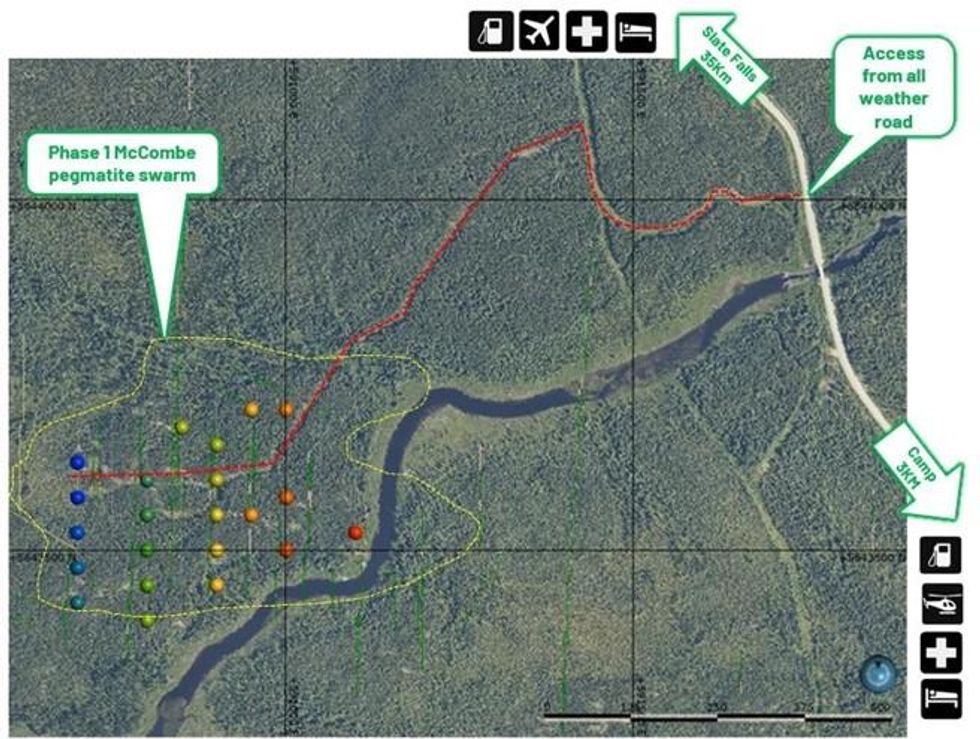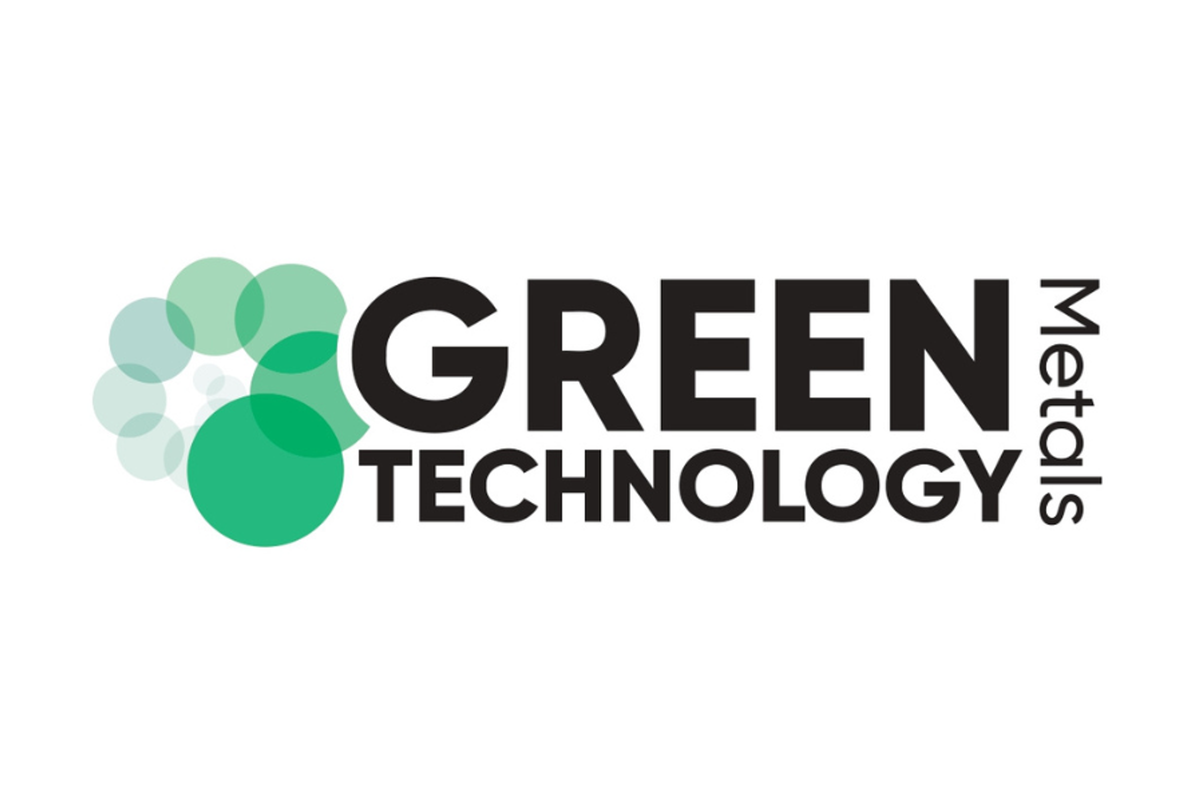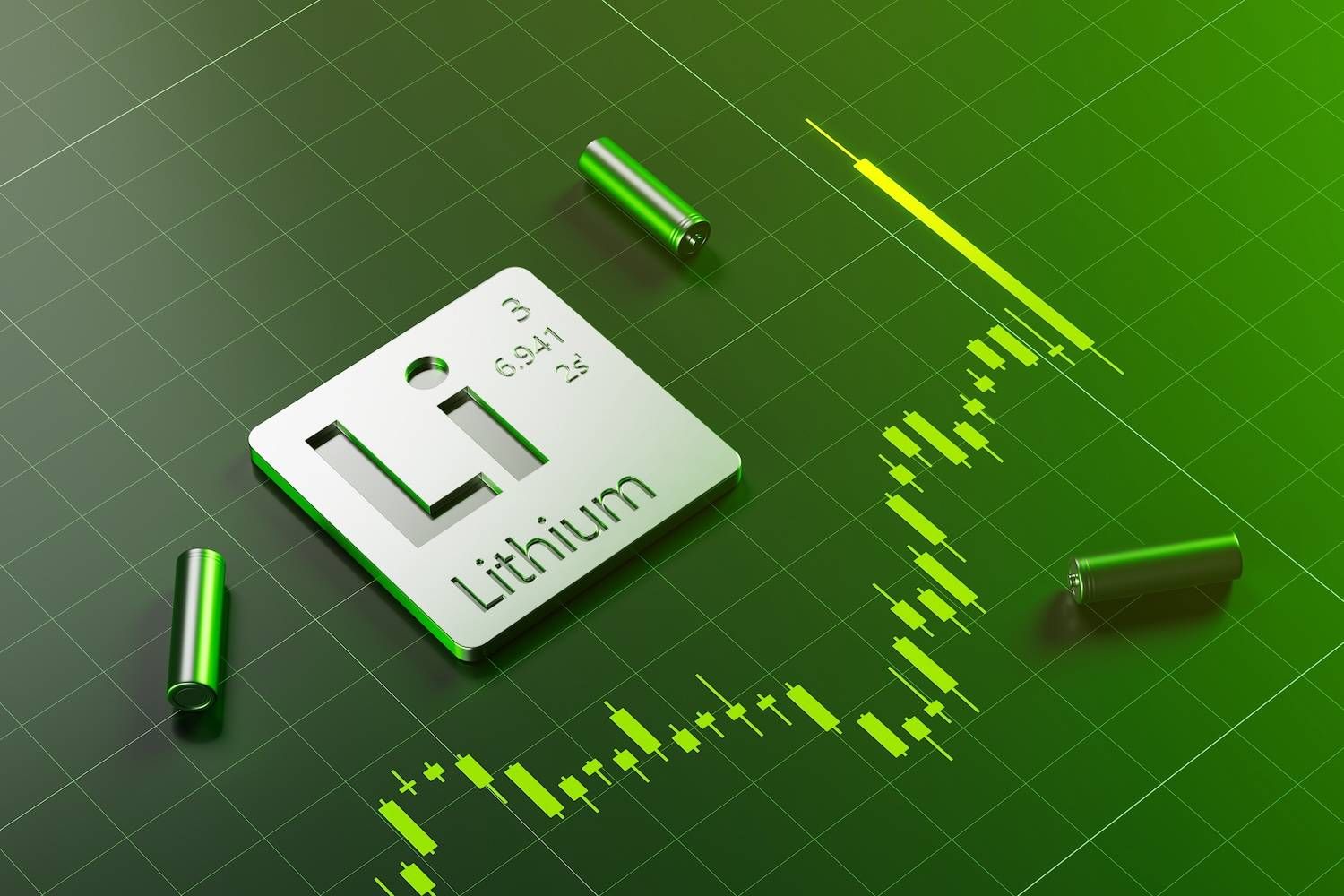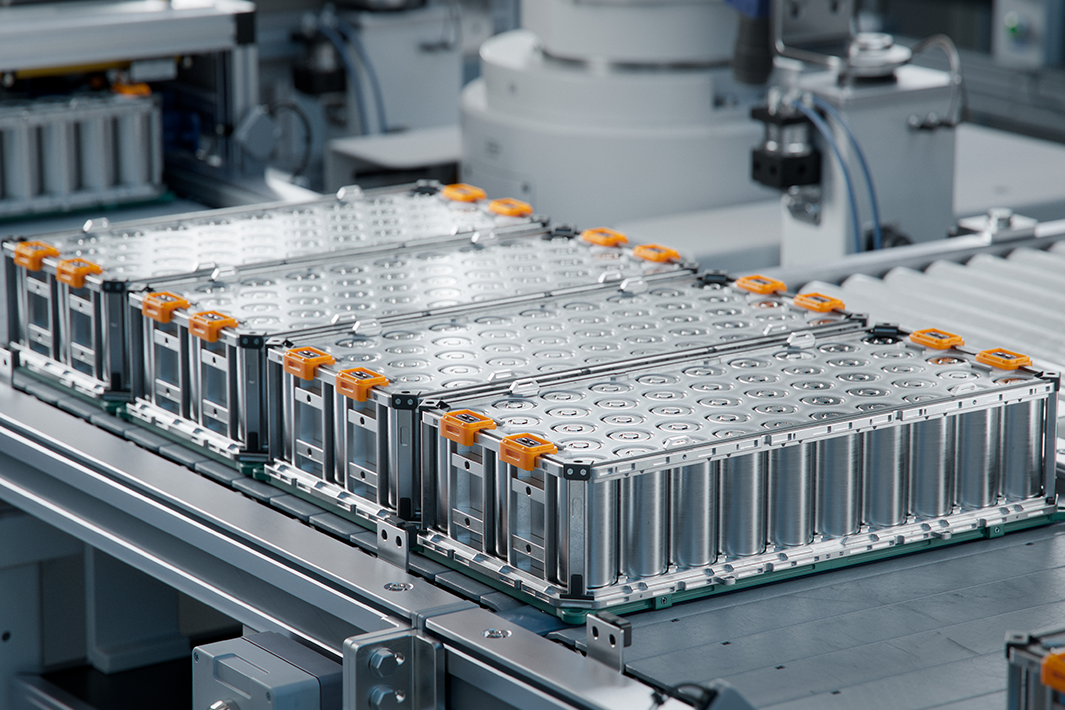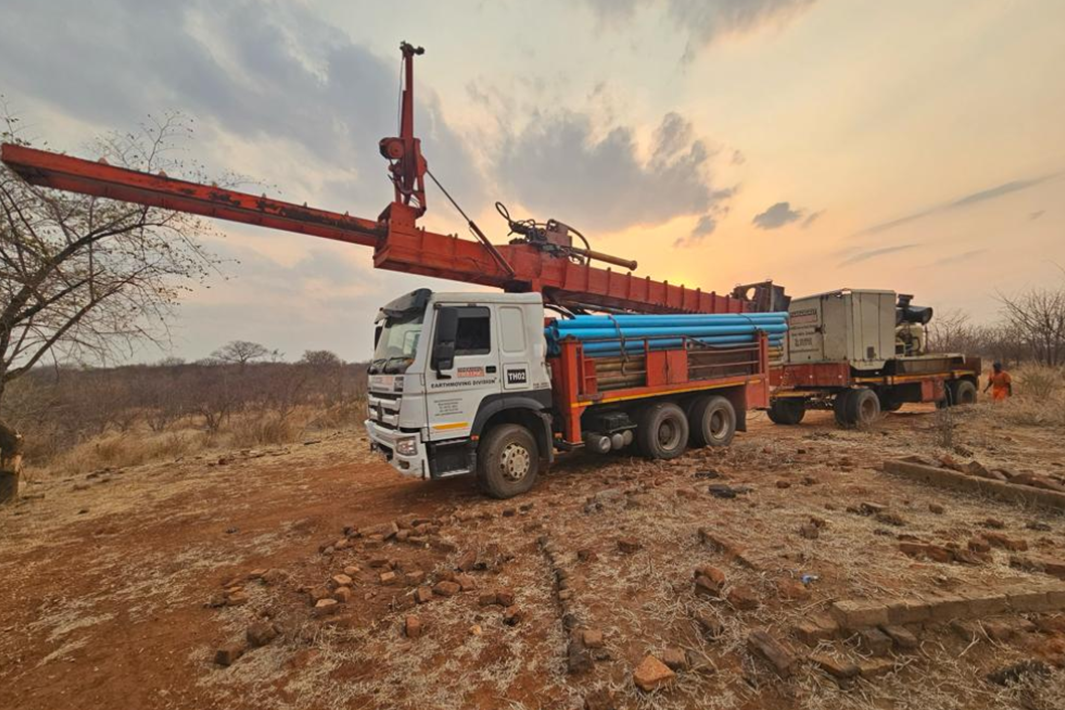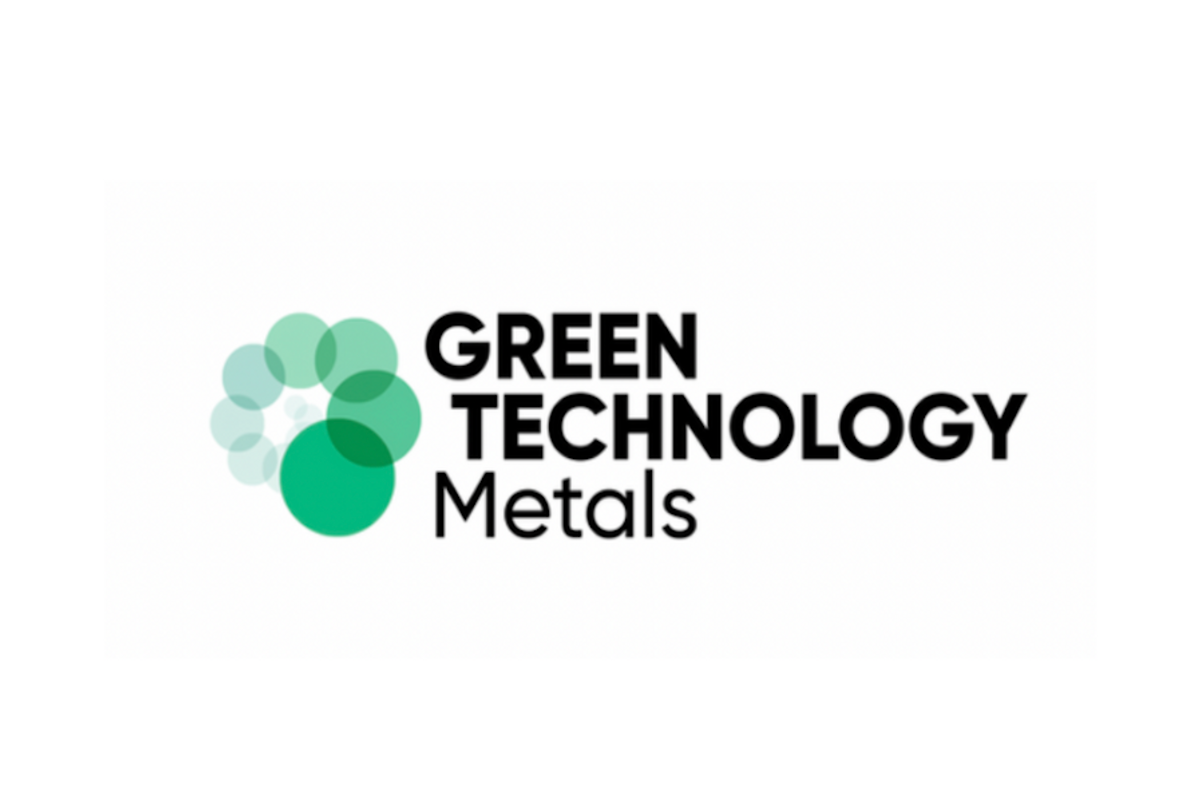
September 04, 2022
Green Technology Metals Limited (ASX: GT1) (GT1 or the Company) is pleased to advise that drilling has commenced at its Root Project, located approximately 200 km west-north-west of GT1’s flagship Seymour Project. Drilling is initially focussed on the McCombe LCT pegmatite.
HIGHLIGHTS
- Phase 1 diamond drilling has commenced at the McCombe LCT pegmatites (Root Project).
- Initial 22-hole, 2,500m program set to confirm McCombe historical drilling and sampling results.
- Phase 2 diamond drilling to target significant expansion of the known McCombe mineralisation.
- Historical drilling demonstrated down-dip continuity at McCombe (including 67m @ 1.75% Li20).
- Total 24,000m diamond drilling program initially planned over McCombe and Morrison pegmatites.
- Targeting rapid delineation of a maiden Mineral Resource estimate for the Root Project.
- Drilling continues in parallel at Seymour with two drill rigs operating
“Commencing drilling at Root is another significant milestone for our business. The initial focus at the advanced McCombe LCT pegmatite is confirmation and extension of known mineralisation, followed by rapid estimation of a maiden Mineral Resource estimate. We then plan to target other known spodumene-bearing LCT pegmatites at Root, including Morrison and Root Bay.”
- GT1 Chief Executive Officer, Luke Cox
McCombe drilling program at Root
Initial drilling at McCombe (22 holes for 2,500m) is targeted to confirm historical drilling and sampling. The second phase of drilling is then planned to test for extensions of the mineralised pegmatites in all directions, infill key sections and rapidly facilitate delineation of a maiden Mineral Resource estimate for the Root Project.
The McCombe LCT (Lithium-Caesium-Tantalum) pegmatite is the most advanced prospect at Root. Historical drilling completed by Ardiden Limited in 2016 saw six holes drilled, which intersected numerous pegmatites, generally dipping to the south and striking east-west. This drilling confirmed historical drill results and demonstrated the down dip continuity of the lithium mineralisation, including a key extensional intercept of 67m @ 1.75% Li2O (see GT1 ASX release dated 8 November 2021, Prospectus).
Figure 1: Phase 1 drill collars at McCombe pegmatite – confirmation program of 22 holes for 2,500m
Field geologists continue to map the known LCT pegmatites, and determine their exposed lateral extents, across the broader Root Project. In combination with the recently acquired aerial photography, aerial geophysics and Lidar bare earth interpretations, a pipeline of initial targets for further field testing is being established at Root.
Click here for the full ASX release
GT1:AU

Sign up to get your FREE
Green Technology Metals Investor Kit
and hear about exciting investment opportunities.
- Corporate info
- Insights
- Growth strategies
- Upcoming projects
GET YOUR FREE INVESTOR KIT
The Conversation (0)
17 September
Green Technology Metals
Delivering the next lithium hub in North America
Delivering the next lithium hub in North America Keep Reading...
30 November
Altris Engineering Appointed to Optimise & Lead Seymour DFS
Green Technology Metals (GT1:AU) has announced Altris Engineering Appointed to Optimise & Lead Seymour DFSDownload the PDF here. Keep Reading...
17 November
Ontario Lithium Project Development Update
Green Technology Metals(GT1:AU) has announced Ontario Lithium Project Development UpdateDownload the PDF here. Keep Reading...
31 October
Quarterly Activities/Appendix 5B Cash Flow Report
Green Technology Metals(GT1:AU) has announced Quarterly Activities/Appendix 5B Cash Flow ReportDownload the PDF here. Keep Reading...
12 October
Successful A$4.5m Two Tranche Placement
Green Technology Metals (GT1:AU) has announced Successful A$4.5m Two Tranche PlacementDownload the PDF here. Keep Reading...
09 October
Trading Halt
Green Technology Metals (GT1:AU) has announced Trading HaltDownload the PDF here. Keep Reading...
24 December
Altius Minerals to Expand Portfolio with C$520 Million Lithium Royalty Deal
Altius Minerals (TSX:ALS,OTCQX:ATUSF) is making a bet on a lithium market recovery, agreeing to acquire Lithium Royalty (TSX:LIRC) in a C$520 million deal that will expand its exposure to battery metals.Under a definitive agreement announced by the two companies on Monday (December 22), Altius... Keep Reading...
23 December
Liontown's First Tjiwarl Member Completes Apprenticeship at Kathleen Valley
Liontown (ASX:LTR,OTC Pink:LINRF) has reached a milestone at its Kathleen Valley operations, with Vaughan Harris becoming the first Tjiwarl community member to complete an apprenticeship with the company.“Being the first Tjiwarl apprentice to complete an apprenticeship here at Liontown feels... Keep Reading...
22 December
Lithium Market 2025 Year-End Review
The global lithium market endured a bruising 2025, with persistent oversupply and softer-than-expected electric vehicle (EV) demand driving prices for the battery metal to multi-year lows.Lithium carbonate prices in North Asia slipped below US$9,550 per metric ton in February — their weakest... Keep Reading...
11 December
Mining the Gap: 5 Forces Shaping North America’s Lithium Supply Chain
A convergence of industry investments, government initiatives and a shifting global trade dynamic is creating an environment ripe for the development of a North American battery supply chain, with lithium playing a leading role. These trends are reshaping the region’s industrial base and opening... Keep Reading...
10 December
Rock Bottom: Strategic Window for Ground-level Lithium Investment
When lithium prices hit bottom, savvy investors know that’s exactly where the next big discovery begins — literally. Beneath the surface of global markets and remote exploration grounds, new opportunities are forming in the wake of a sharp price reset and renewed geopolitical urgency.Recent... Keep Reading...
10 December
Liontown Resources Pens Lithium Offtake Agreement with China's Canmax
Liontown Resources (ASX:LTR,OTC Pink:LINRF) has executed a binding offtake agreement with Chinese conglomerate Canmax Technologies (SZSE:300390) as part of its strategy to diversify its customer base.“Listed on the Shenzhen Stock Exchange, Canmax is one of the world’s leading manufacturers of... Keep Reading...
Latest News

Sign up to get your FREE
Green Technology Metals Investor Kit
and hear about exciting investment opportunities.
- Corporate info
- Insights
- Growth strategies
- Upcoming projects
GET YOUR FREE INVESTOR KIT
Interactive Chart
Latest Press Releases
Related News
TOP STOCKS
American Battery4.030.24
Aion Therapeutic0.10-0.01
Cybin Corp2.140.00
